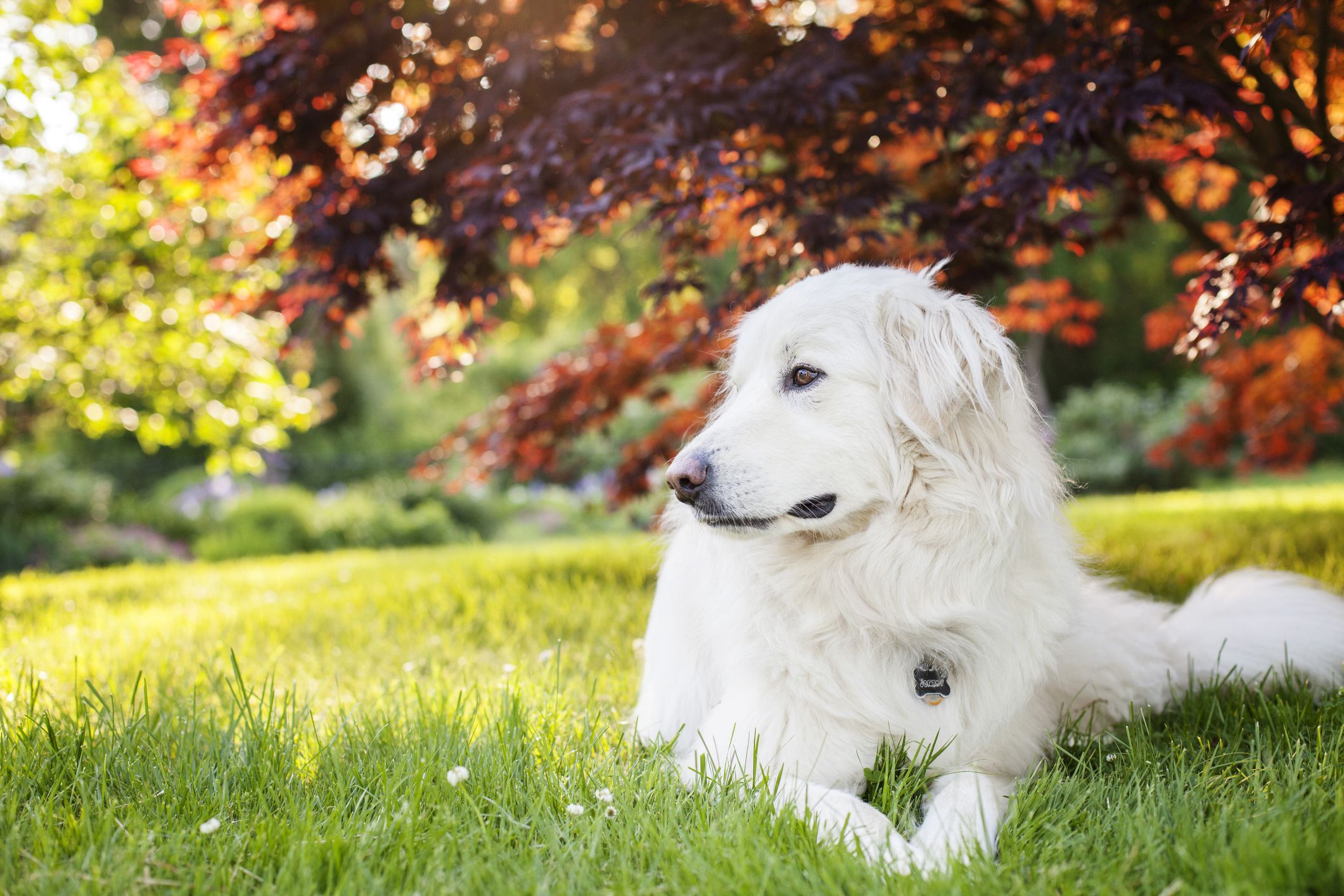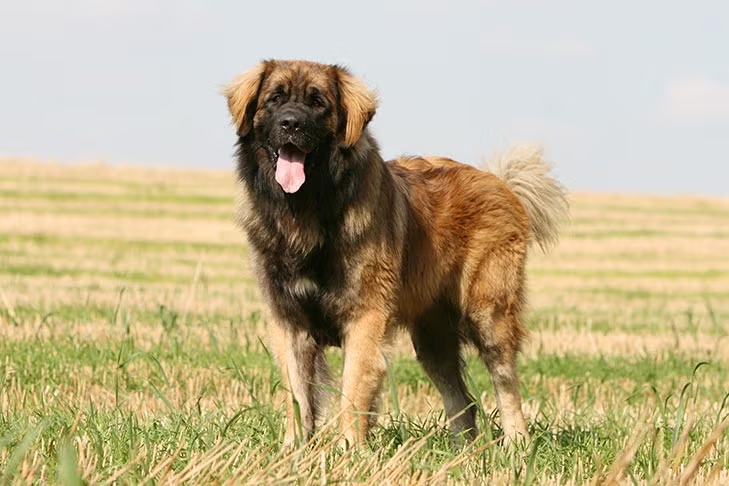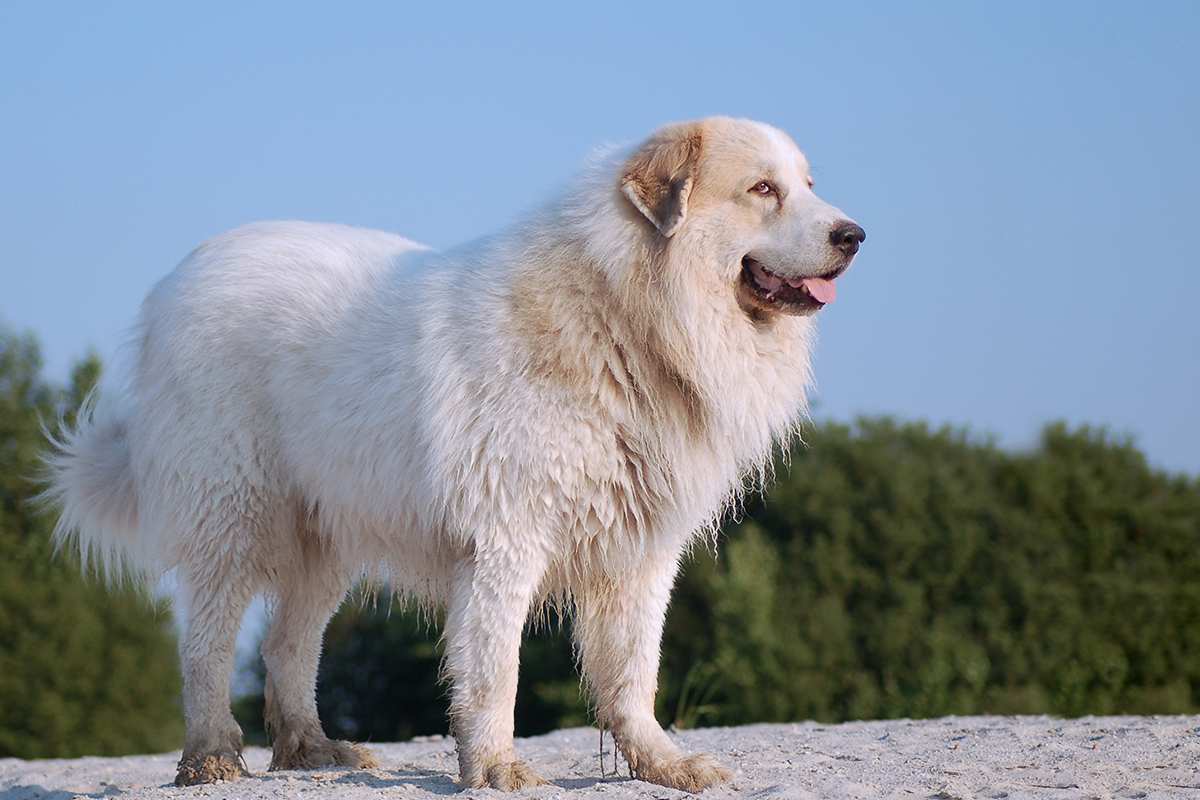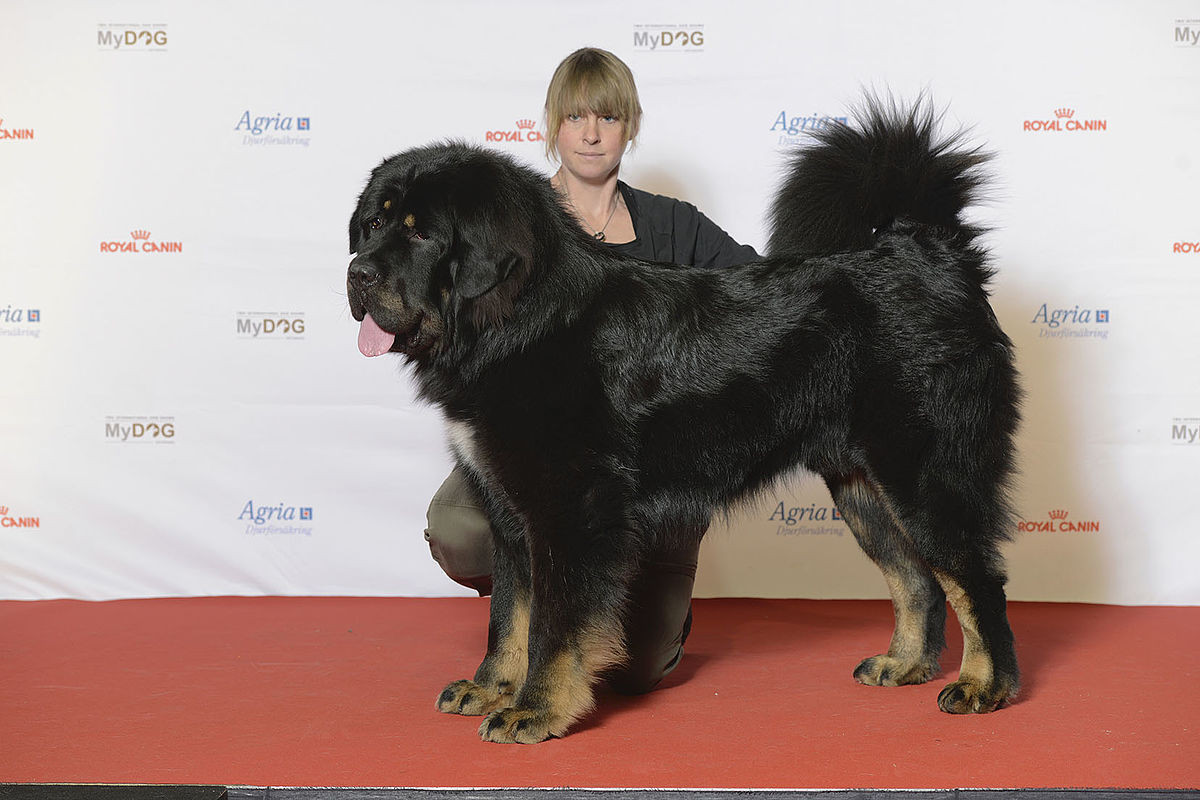The first time I saw a Newfoundland in person, I thought someone had let their pet bear loose in the dog park. This massive, lumbering creature with a thick black coat was casually strolling around, while small children climbed all over him like he was a living playground. He seemed completely unbothered by the attention—in fact, he looked like he was absolutely living for it.
That’s the Newfoundland for you—affectionately called “Newfies” or “Newfs” by those who love them—these gentle giants combine impressive size with one of the sweetest temperaments in the canine world. They’re renowned for their patience with children (hence their nickname as “nanny dogs”), their incredible swimming abilities, and yes, their prodigious amounts of drool (consider yourself warned!).
As someone who’s spent years researching dog breeds and had the pleasure of meeting many a Newfie, I can tell you that these majestic dogs are truly something special. Whether you’re considering adding one to your family or just curious about these magnificent creatures, this guide will give you all the info you need about the lovable, slobbery, heart-stealing Newfoundland dog.
Rich History: From Water Rescue to Literary Fame
The Newfoundland’s story begins, unsurprisingly, in Newfoundland, Canada, where these powerful dogs were developed as working companions for fishermen. Their exact origins are somewhat debated, but most experts believe they descended from indigenous Canadian dogs crossed with European breeds brought by fishermen and explorers in the 16th and 17th centuries.
What’s not in dispute is the Newfoundland’s historical purpose: these dogs were bred to work. With their massive strength, water-resistant coats, and natural swimming abilities, they excelled at a variety of essential tasks:
- Hauling fishing nets from the cold North Atlantic waters
- Retrieving items (or people) that fell overboard
- Pulling carts laden with fish and supplies
- Performing water rescues—a skill they’re still famous for today
Their prowess in the water is truly remarkable. With partially webbed feet, powerful legs, and a water-resistant double coat, Newfoundlands are built for swimming in even the coldest, roughest waters. Historical accounts tell of Newfoundlands swimming through treacherous seas to rescue drowning victims, and many modern Newfies are still trained for water rescue work today.
The breed’s gentle nature and impressive capabilities have earned them places in literature and history. Perhaps most famously, J.M. Barrie immortalized the breed in “Peter Pan” as Nana, the canine nursemaid who cared for the Darling children. Lord Byron was so devoted to his Newfoundland, Boatswain, that he wrote a heartfelt poem upon the dog’s death and had a monument built in his honor that was larger than his own.
In 1815, a Newfoundland reportedly saved Napoleon Bonaparte from drowning during his escape from Elba. And the famed Lewis and Clark expedition included a Newfoundland named Seaman who served as both guardian and hunter throughout their journey.
Today’s Newfoundland retains the gentle, protective instincts that made them such valuable companions to fishermen and explorers throughout history, though most now spend their days as beloved family pets rather than working dogs.
Impressive Appearance: The Definition of Majestic
There’s no missing a Newfoundland in a crowd—these dogs have a presence that commands attention. Let’s break down their distinctive appearance:
Size and Build
Newfoundlands are truly giants of the dog world. Males typically stand 28 inches tall at the shoulder and weigh between 130-150 pounds, while females are slightly smaller at about 26 inches tall and 100-120 pounds. Some exceptional specimens have been known to reach 200 pounds or more!
Despite their imposing size, there’s nothing clumsy about a well-bred Newfie. They’re powerfully built with broad heads, deep chests, and strong, muscular bodies—a build that reflects their working heritage and enables them to perform impressive feats of strength and endurance.
That Magnificent Coat
The Newfoundland’s double coat is one of their most distinctive features. The outer coat is coarse, moderately long, and either straight or slightly wavy, while the undercoat is soft, dense, and water-resistant. This combination provides excellent insulation in cold water, allowing these dogs to swim in frigid temperatures that would quickly lead to hypothermia in most other breeds.
Classic Newfoundland colors include:
- Black: The most common and traditional color
- Brown: Ranging from chocolate to bronze
- Gray: A dilute black that appears bluish-gray
- Landseer: White with black markings (named after Sir Edwin Landseer, who featured these dogs in his paintings)
Some kennel clubs consider the Landseer pattern a color variety of the Newfoundland, while others (particularly in Europe) recognize it as a separate breed entirely.
Facial Features and Expression
The Newfoundland’s face is as expressive as it is distinctive. They have relatively small eyes for their head size, usually dark brown, which convey a sweet, intelligent expression. Their ears are relatively small, triangular, and carried close to the head.
Perhaps most notable about their faces (aside from their gentle expression) is the loose skin around their mouths that contributes to their famous drooling tendency. While this was helpful for their water rescue work, it does mean that Newfie owners quickly become accustomed to keeping drool towels on hand!
Temperament: The Gentle Giant Personified
If there’s one thing that truly sets the Newfoundland apart, it’s their exceptional temperament. These dogs embody the phrase “gentle giant” like no other breed.
Sweet-Natured and Patient
The Newfoundland’s temperament is so important to the breed that it’s considered a defining characteristic in the breed standard. They’re famously sweet-natured, calm, and patient, making them excellent companions for families of all types.
Their natural gentleness is particularly evident with children. Newfoundlands seem to inherently understand the need to be careful around smaller humans, and they typically show remarkable tolerance for the sometimes rough handling that comes with kids. This patient nature earned them the nickname “nanny dogs,” and many Newfie owners share stories of their dogs deliberately positioning themselves between children and potential dangers.
Of course, due to their sheer size, interactions between young children and Newfoundlands should always be supervised—an enthusiastic Newfie can unintentionally knock over a small child simply by being affectionate.
Protective Without Aggression
While Newfoundlands aren’t typically aggressive, they do have natural protective instincts. They’re alert to unusual situations and will position themselves between their family and perceived threats. Their imposing size alone is usually enough to deter unwanted visitors.
This protective instinct rarely manifests as aggression, though. Newfies are generally more likely to simply place themselves between their family and a stranger than to show aggressive behavior. This balanced approach to protection—alert and watchful without being reactive—makes them excellent family guardians.
Water-Loving Swimmers
True to their heritage, most Newfoundlands have an absolute passion for water. Swimming seems to be hardwired into their DNA, and many owners report that their Newfies will seek out any body of water, from pools to puddles to lakes.
This natural swimming ability, combined with their instinctive desire to rescue, means Newfoundlands excel at water rescue work. Some have even been known to “rescue” family members they perceive to be in danger while swimming, whether help is needed or not!
Intelligent and Trainable
Despite their sometimes laid-back demeanor, Newfoundlands are highly intelligent dogs who learn quickly and respond well to positive, reward-based training methods. They have a natural desire to please their owners, which makes them generally agreeable students.
However, like many large breeds, they mature slowly, with their “puppy phase” sometimes lasting up to 18-24 months. During this time, consistent, patient training is essential to prevent a full-grown Newfie from developing unmanageable behaviors.
While not as work-oriented as some breeds, Newfoundlands do enjoy having a job to do. They excel in draft work (pulling carts), water rescue training, therapy work, and obedience. Providing these types of activities not only gives them physical exercise but also the mental stimulation they need to thrive.
Health and Lifespan: Understanding the Giant Breed Reality
As with all purebred dogs, Newfoundlands are prone to certain health conditions, and their large size brings specific considerations. Being informed about these aspects is crucial for anyone considering bringing a Newfie into their family.
Lifespan
The average lifespan of a Newfoundland is approximately 8-10 years, though some individuals may live up to 12-15 years with excellent care. Recent research suggests they may live slightly longer than previously thought, with a 2024 UK study finding an average lifespan of 11 years.
While this might seem short compared to smaller breeds that can live 15+ years, it’s fairly typical for dogs of this size. The reality is that giant breeds generally have shorter lifespans than their smaller counterparts.
Common Health Concerns
Newfoundlands can be prone to several health conditions, many of which are common among large and giant breeds:
- Hip and Elbow Dysplasia: These developmental conditions affect the joints and can cause pain, lameness, and eventually arthritis. Newfoundlands have one of the highest rates of hip dysplasia among all breeds.
- Dilated Cardiomyopathy (DCM): A serious heart condition where the heart becomes enlarged and doesn’t function properly. This can eventually lead to heart failure.
- Subvalvular Aortic Stenosis (SAS): A heart condition that causes narrowing of the aorta. It can range from mild to severe and potentially lead to heart failure.
- Gastric Dilatation-Volvulus (Bloat): A life-threatening condition where the stomach fills with gas and twists. This requires immediate emergency veterinary intervention.
- Cystinuria: A genetic condition that can lead to the formation of stones in the urinary tract.
- Cancer: Newfoundlands have higher rates of certain cancers, particularly bone cancer, compared to other breeds.
- Epilepsy: Some Newfies may develop seizure disorders that require ongoing management.
Working with a reputable breeder who performs appropriate health testing on their breeding stock is essential for minimizing these risks. Responsible Newfoundland breeders screen their dogs for hip and elbow dysplasia, heart conditions, and cystinuria at a minimum.
Preventative Care
To help your Newfoundland live the longest, healthiest life possible:
- Maintain a healthy weight – excess pounds put additional strain on joints and hearts, which is particularly problematic for giant breeds
- Feed multiple smaller meals rather than one large meal to reduce bloat risk
- Consider a preventative gastropexy surgery (stomach tacking) to prevent bloat
- Schedule regular veterinary check-ups, ideally twice yearly for adult dogs
- Provide appropriate exercise without overexertion, especially in growing puppies
- Consider joint supplements containing glucosamine and chondroitin
- Use a large-breed specific puppy food for slow, controlled growth in puppies
With proper care and attention, many Newfoundlands can live healthy, active lives well into their senior years, though owners should be prepared for the emotional and financial aspects of caring for an aging giant breed.
Living With a Newfoundland: Day-to-Day Realities
Before bringing home a Newfoundland, it’s important to understand what daily life with these gentle giants entails. They have specific needs that differ from more common breeds, and being prepared will ensure a happy relationship for both you and your dog.
Exercise Requirements
Despite their working heritage, Newfoundlands have moderate exercise needs compared to some high-energy breeds. They typically do well with:
- Daily walks totaling 30-60 minutes
- Swimming opportunities (which they absolutely love)
- Occasional hikes or playtime at the dog park
- Mental stimulation through training or puzzle toys
It’s important not to over-exercise young Newfoundlands while they’re still growing, as this can damage developing joints. Similarly, adult Newfies should not be exercised in hot weather as they can overheat quickly due to their size and thick coats.
Interestingly, while Newfoundlands enjoy their daily exercise, they’re often quite calm and even somewhat lazy around the house, often content to simply lounge near their family members. They’ve been described as “couch potatoes” who are happy to spend most of the day napping, as long as they get some activity each day.
Grooming Needs
That beautiful coat comes with significant maintenance requirements:
- Brushing 2-3 times weekly with the right tools (slicker brush, undercoat rake, and wide-toothed comb)
- More frequent brushing during seasonal shedding (spring and fall), when they “blow” their undercoat
- Regular nail trimming, ear cleaning, and dental care
- Occasional baths (every 4-8 weeks, depending on activities and coat condition)
Be prepared for fur—lots of it. Newfoundlands shed year-round, with heavier shedding in spring and fall. Many owners find that regular brushing outdoors helps manage the fur situation inside the home.
And then there’s the drool. Newfies are notorious droolers, especially after drinking or when they’re excited about food. Many owners keep “drool towels” strategically placed around the house and carry them when out and about. Some even outfit their Newfies with bibs to catch the drool before it ends up on furniture or clothes.
Space and Living Arrangements
Newfoundlands don’t necessarily need a huge amount of yard space, but they do need enough room to be comfortable. Their ideal living situation includes:
- Enough indoor space for them to maneuver without constantly knocking things over
- Access to cool resting areas, especially in warmer climates
- Preferably some outdoor space, though this isn’t absolutely essential
While technically possible to keep a Newfie in an apartment (they’re surprisingly calm indoors), it’s challenging due to their size. More important than square footage is the amount of time they spend with their people—Newfoundlands form strong bonds with their families and don’t do well when left alone for extended periods.
Feeding Guidelines
Nutrition is particularly important for giant breeds like the Newfoundland. Their dietary needs include:
- High-quality food formulated for large or giant breeds
- Appropriate calcium and phosphorus levels, especially for puppies
- Careful portion control to maintain ideal weight
- Multiple smaller meals rather than one large meal (to reduce bloat risk)
Adult Newfoundlands typically eat between 4-5 cups of high-quality dry food daily, divided into at least two meals. The exact amount will vary based on the dog’s size, age, activity level, and metabolism.
While puppies require adequate protein for growth, it’s important not to overfeed them or supplement with calcium, as too-rapid growth can contribute to joint problems. Large-breed specific puppy foods are designed to promote slow, steady growth that’s healthier for these giant dogs.
Is a Newfoundland Right for Your Family?
After learning about these magnificent dogs, you might be wondering if a Newfoundland would be a good fit for your household. Here’s a candid assessment of who might be well-matched with a Newfie:
You Might Be a Good Newfoundland Owner If:
- You have adequate space: While they don’t need acres of land, a Newfie does need room to move around comfortably.
- You’re home frequently: These dogs form strong bonds with their families and don’t do well with extended alone time.
- You live in a moderate to cool climate: Their thick coats make hot weather challenging.
- You don’t mind fur and drool: If you’re a neat freak, this may not be the breed for you!
- You can handle their size: Not just physically, but also the financial aspects of feeding, housing, and providing veterinary care for a giant breed.
- You have a sense of humor: Living with a Newfie means embracing the occasional chaos that comes with their size and slobber.
- You appreciate a calm, gentle temperament: If you’re looking for a loving family companion rather than a high-energy exercise partner.
- You have access to water: While not essential, swimming opportunities will make your Newfie extremely happy.
This Might Not Be Your Breed If:
- You live in a very hot climate: Their thick coats make heat tolerance poor.
- You’re away from home for long hours: Newfies need companionship and don’t thrive when left alone regularly.
- You’re on a tight budget: From food to veterinary care to grooming supplies, giant breeds are expensive to maintain.
- You can’t commit to regular grooming: That magnificent coat requires consistent maintenance.
- You want a long-lived dog: Their 8-10 year lifespan is shorter than many breeds, which can be heartbreaking for families.
- You’re looking for a jogging partner: While they need exercise, Newfies aren’t built for running long distances, especially in warm weather.
- You’re a first-time dog owner: While gentle, their size and specific needs make them better suited to experienced dog owners.
Finding a Newfoundland
If you decide a Newfoundland is right for your family, there are several routes to consider:
Reputable Breeders: The Newfoundland Club of America maintains a breeder referral program to connect prospective owners with ethical breeders. Expect to pay between $1,500-$2,500 for a well-bred puppy from health-tested parents, and be prepared for a waiting list as reputable breeders typically don’t produce frequent litters.
Rescue Organizations: There are several Newfoundland-specific rescue organizations that rehome Newfies in need. Adult Newfoundlands can be a wonderful option, particularly for those who want to skip the challenging puppy stage.
Whichever route you choose, take time to research thoroughly, ask questions about health testing and temperament, and ensure you’re working with ethical sources that prioritize health and temperament over profits or appearance.
Life With a Newfie: Owner Insights
To give you a feel for what life with a Newfoundland is really like, here are some perspectives from owners:
“You will never go to the bathroom alone again. My Newfie follows me everywhere, and if I try to close the door, he’ll just push it open with his giant head.”
“The shedding is epic. I could literally make a new dog from what comes off during brushing sessions in the spring. We joke that we have Newfie ‘tumbleweeds’ rolling across our hardwood floors.”
“Be prepared for everyone to want to meet your dog. A simple walk around the block can turn into an hour-long excursion because people are constantly stopping to ask about him.”
“They have an uncanny ability to sense when you’re sad or upset. My Newfie will gently rest his massive head on my lap when I’m feeling down, as if to say, ‘I’m here for you.'”
“We lost our Newfie at 9 years old, and it was devastating—they leave such a huge hole, both literally and figuratively. But I wouldn’t trade those 9 years for anything. There’s just something special about these dogs that gets in your soul.”
Final Thoughts: The Magnificent Slobbery Giant
The Newfoundland is truly a special breed—a gentle giant with a heart as big as their massive paws. Their combination of impressive size, sweet temperament, and unwavering loyalty makes them unlike any other breed.
While they’re not the right fit for every home, for families who can provide the space, care, and companionship they need, Newfoundlands offer an unparalleled depth of connection and joy. Their calm wisdom, patient affection, and occasional goofy antics create a unique package that many owners find irreplaceable.
Perhaps the most telling testament to the breed comes from those who have loved and lost a Newfie—despite the heartbreak of their relatively short lifespans, many say they couldn’t imagine life without another one. There’s something about these gentle giants that leaves an indelible paw print on the heart.
Have you had the pleasure of knowing a Newfoundland? Or are you considering adding one to your family? Share your experiences or questions in the comments below!




